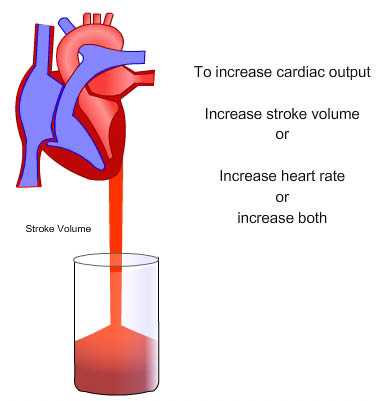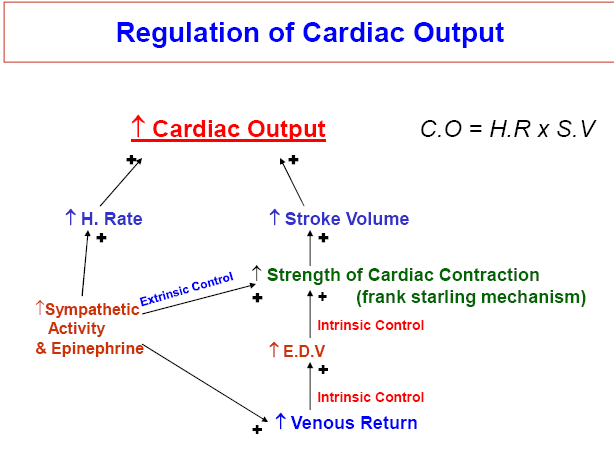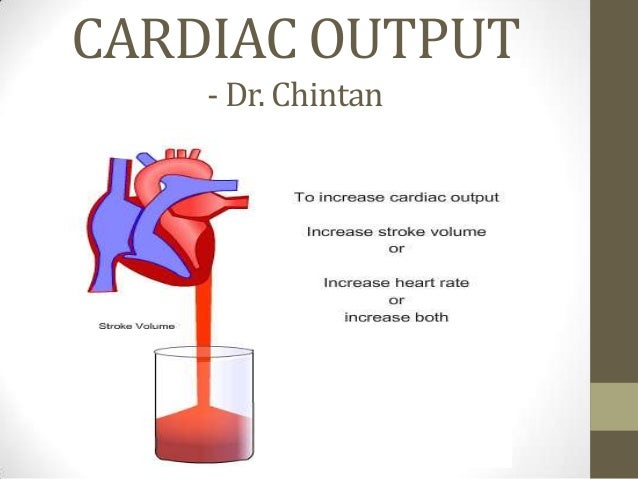Cardiac output
The cardiac output (CO ) or cardiac output (CO ) is the volume of blood that is ascending pumped into the bloodstream in one minute by the heart through the aorta. Cardiac output is therefore a measure of the pumping function of the heart. Cardiac output can be calculated by multiplying the stroke volume by the heart rate. Typically, the cardiac output of the right ventricle is the same as the cardiac output of the left ventricle, since the total volume must flow into a closed circuit by both heart sites, but can occur over short periods of time differences, for example, if the entire volume is not immediately through the veins to flow back to the heart again.
More generally, the term cardiac output. But it means the same in principle, except that the time unit is not specified here. Abbreviated it is as cardiac output. In English, and as a technical term in German, the term cardiac output ( abbreviated as CO) is used for this.
For practical considerations, to evaluate the pumping function rather the value of the ejection fraction has naturalized ( the percentage of stroke volume at the highest volume of the left ventricle at end diastole ), as it can be read directly from the echocardiography. Cardiac output is determined, however, in more complex cardiac catheterizations.
If the cardiac output based on the body surface, as referred to the result as cardiac index (or cardiac index ).
Normal values
- At rest the cardiac output in the healthy adult human is about 4.5-5 liters / minute. The lower the standard value for the cardiac index is 2.5 l / min.
- Under load the HMV can be increased up to six times and then be up to 30 liters / minute, in some cases more. From the former Spanish cyclist and multiple Tour de France winner Miguel Indurain is often claimed that he had had under maximum load an HMV of 50 l / min.
Measurement
The HMV can only be measured indirectly in clinical practice. There are different methods:
Reduced HMV
A reduced cardiac output can be found at a reduced pumping rate of the left or right ventricle. Also valvular heart disease can reduce cardiac output, as well as hypothyroidism.
Increased HMV
An increased cardiac output can be found in fever, hyperthyroidism and anemia. Also in hyperdynamic shock states, such as septic shock, the HMV may be elevated, although hypoperfusion of organs may be present, which is due to a decrease in peripheral resistance. During pregnancy, there is also an increased cardiac output. This is due to the increased blood volume during pregnancy of about 1 1/ 2 liters, which is necessary for the treatment of placenta, uterus and child.








